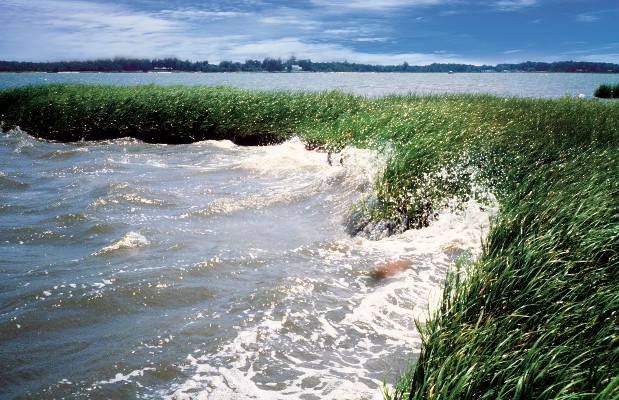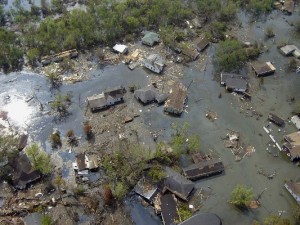
Loss of Louisiana Wetlands Increases Vulnerability to Climate Change
 Dan Vergano wrote a great article in USA Today on the shrinking marsh lands and wetlands in Louisiana, which act as a buffer against hurricanes. The Gulf Coast has experienced its fair share of severe storms, but climate change is increasing the threat to this already vulnerable area. ASP previously published a major report that tallied the cost of climate change to individual states, including Louisiana. You can read the “Pay Now, Pay Later” report by clicking here.
Dan Vergano wrote a great article in USA Today on the shrinking marsh lands and wetlands in Louisiana, which act as a buffer against hurricanes. The Gulf Coast has experienced its fair share of severe storms, but climate change is increasing the threat to this already vulnerable area. ASP previously published a major report that tallied the cost of climate change to individual states, including Louisiana. You can read the “Pay Now, Pay Later” report by clicking here.
Coastal wetlands are a critical element of storm protection. The maze of canals, grasses, and marshes along the Louisiana coast provide a buffer against storm surge and flooding. As storms pound the coast, wetlands absorb much of the punch. Although putting numbers on these valuable ecosystem services is tricky, the National Oceanic and Atmospheric Administration (NOAA) estimates wetlands contribute $23 billion in annual storm protection services.
Yet, climate change is undermining wetlands in Louisiana. Sea levels have risen an estimated 7 inches over the past century, swallowing up some of the coast. Man-made public works have also contributed to the problem, with levees diverting the Mississippi River away from the delta. The river used to carry mud and sediment that would rebuild wetlands. Without this crucial replenishing mechanism, marshes are sinking. Over the past 80 years, Louisiana has lost 1,880 square miles of coastal marshes.
The oil and gas industry has also carved up thousands of miles of canals along the coast, allowing salt water to rush in. This kills off the wetlands. The Southeast Louisiana Flood Protection Authority-East filed a lawsuit against the industry for damages.
Rising temperatures also present a threat to the coast. Warmer oceans contribute to more energetic hurricanes. Although some climate scientists believe that hurricanes may become less frequent from climate change, each individual storm will be more powerful on average.
If hurricanes are to become more powerful, and natural storm protections are disappearing, what can be done? Reducing greenhouse gas emissions is an obvious answer, but the world has already committed to a certain amount of climate change. Therefore, adaptation is in order.
For the Gulf Coast, that means rebuilding wetlands where possible, and building sand dunes to guard against storms. The USA Today article notes that this is being done on a volunteer basis, but much more needs to be done.
However, unless the loss of wetlands can be curbed, the U.S. may feel compelled to build increasingly expensive infrastructure projects to guard against the encroaching ocean. The federal government made large investments in building levees to guard against future storms after Hurricane Katrina. Policymakers are confident the threat has been reduced, but with disappearing wetlands, rising sea levels, and stronger storms, it is unclear whether the U.S. has done enough.
Still, there isn’t a strong appetite in Congress to allocate billions more in infrastructure projects. Whether or not it makes economic sense to continue to fortify the coast depends on the individual project and location. The U.S. can’t build a seawall around its entire coastline.
As the peak of the Hurricane season approaches, the Gulf Coast remains vulnerable to severe storms.
PNPL 2011 Louisiana by The American Security Project






[…] Loss of Louisiana Wetlands Increases Vulnerability to Climate Change […]